

|

|
| See Homepage. | This page: Specials - 1950s Ford Pop based homebuilt cars |
Ford 1172cc sidevalve powered sportscars.
Once upon a time, back when space travel was the stuff of Dan Dare, people didn't look upon crusty old Ford Pops with the
fondness and adoration that most get heaped upon them today. Back then, and even more so when the 10 year test (the original
MOT) came in, they were seen as little more than rickety outdated old relics, whose best use, once beginning to decay,
would be as hardcore for the new fangled motorways.
More information on tuning companies, 1950s/60s engine & suspension upgrades, and special tuning information, please visit the car tuning companies page. I also received an interesting story from a visitor to the site, about his experiences building Ford and Austin 7 based specials - read about his cars, including the "Terrapin", on this page. Sometimes components from different manufacturers would be used in the build of a one-off car. An example of this is the Mah Special, a trials car built after the war using an Austin 7 chassis, powered by an Aquaplane-equipped Ford 1172 engine. I suspect the majority of 1172 Ford-based cars were based around the Pops and Prefects of the 1950s (like this one in S. Africa, and this Rochdale GT), however this fine story describes the build of a one-off aluminium sportscar, built on to a pre-war Model Y Ford 8 chassis. Although not a special, one interesting car that was sold from new powered by the 1172 engine, and features on the site, was the Paramount. A period photo from the early 1950s of a Paramount Roadster may be found on this page. |
Some examples of E93A/100E based specials.
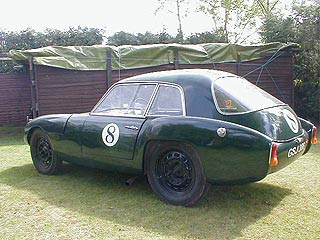
|
Ashley 1172 My own car at one time, built on a boxed-in Pop chassis (standard wheels, spacers on rear axle). Sports Aquaplane manifolds, twin MC2 SU carburettors, export water pump, split independent front end with coil over dampers, remote Wooller gearshift, period bucket seats & fire extinguisher, straight through exhaust. More info: My old Ashley 1172 coupe. Also see: Ashley 1172 roadster in Italy. Ashley 1172 roadster build photos from the 1950s/1960s. |
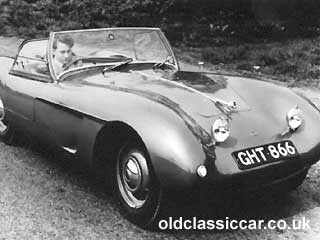
|
Buckler DD2 The Buckler DD2, introduced c1956 and produced into the early 60's. This was built around a tubular space frame chassis, which not only would accept a modern GRP bodyshell, but was adaptable, at point of order, to accept any engine up to 2 litres and a variety of suspension options including De Dion with inboard brakes. Coaxial coil spring shock absorber units were normally fitted all round. The car in the photo, a 1957 Buckler DD2 Mistral, was originally built in 1172 Formula form with a sv engine, 3 speed gearbox and live axle retained by 4 trailing arms and a Panhard rod. It was later uprated to Coventry Climax FWA engine, and De Dion rear with inboard discs. (Malcolm Buckler) |
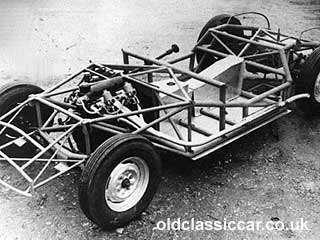
|
Buckler DD2 Buckler DD2's were available ready made, with a performance road test certificate, or in component form. A DD2 was assembled for a series of feature articles by Motor Clubman Magazine and another, with Peco blown MGA engine, was assembled by Sports Cars Illustrated. I enclose a photo of a DD2 chassis, with Ford 105E engine. The DD2 was the most developed Buckler space frame and a DD2 1500, which I raced, coped well with 140 bhp, my car weighing in at under 11 cwt. (Malcolm Buckler) |
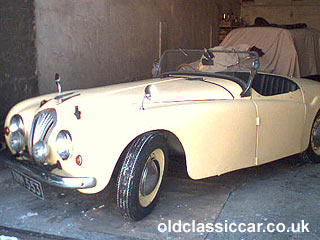
|
Buckler MK X This is the Buckler Mark X, introduced in 1950. Has Ford E93A sidevalve engine of 1172 cc and running gear from the Ford 10. Suspension normally independent at the front. Also optional close ratio gears and high final drive. Seats three abreast and has a good size boot. "Works" bodies were made of aluminium beaten into wooden moulds. Chassis is a space frame of light wall chrome molybdenum tube. Photo by G. Wratschko (Malcolm Buckler) |
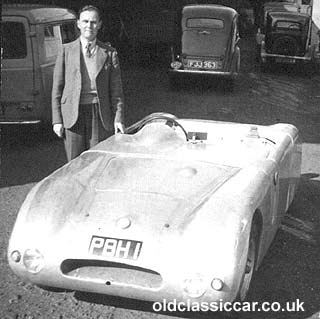
|
Buckler 90 Bucklers made over 12 different models. The Buckler 90 was a good seller. This was also an 1172 Sidevalve, as these were now being extensively raced under the 1172 Formula. The Buckler 90 was also a road car, and there was an optional full touring screen and hood. 1172 Formula rules stated "cars must be road taxed and driven to the events". Two seater, works aluminium hand rolled body with space frame and cable drum brakes. The 90 would do 90 mph with a moderately tuned Ford 10 engine, which was some 30 mph quicker than a Ford 10! It could also be induced to four wheel drift, which enabled it to outcorner many others. (Malcolm Buckler) |
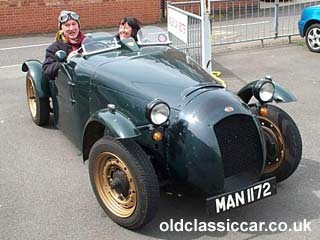
|
Buckler MK5 Mine is a 1954 Buckler Mark 5 with Ford 100E sidevalve engine. These are an easy car for the classic enthusiast to own. They are very durable, with aluminium or GRP bodies and almost unrottable chrome molybdenum space frame chassis.They lay up well in the winter as they have no hydraulics.They are difficult to find for sale but are always at very affordable prices, with almost every spare part available, as they are based on the Ford Ten. A roll of spanners copes with most jobs. (Malcolm Buckler) |
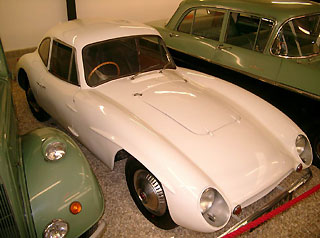
|
Convair GT Angus dropped me a line with details of his research into Convair Cars, one of the many specialist suppliers of rakish bodies for the Pop chassis. Read more about his request on the Convair Cars page. Bob, who now lives in the USA, also sent me a series of photos showing his rare MG-based Convair coupe, read about it on the Convair MG page. |
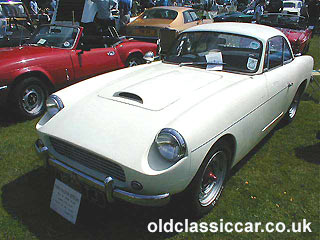
|
Falcon Caribbean A very nice example of the Falcon Caribbean, seen at a local classic car show, one of several bodyshells produced by this firm. Sitting on period Ballamy wheels, it also had a very nice Les Leston steering wheel and other period accessories. I was contacted by someone in 2007 who recently rescued the remains of a Falcon Mk2, registration DVW 146, and they wondered if anyone could help trace the history of this car?? any replies will be forwarded. |
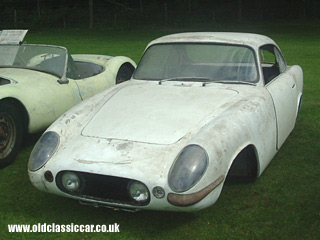
|
Falcon 515 Added in 2008, this photo kindly sent in by John, showing his rare Falcon 515 bodyshell, photographed at a specials day in 2007. The car shown is the first one built, a model first introduced in January 1963. Three examples of the 515 were even entered in the Le Mans 24 Hours but their entry was turned down. Unlike the other specials featured here, which use the 1172 sidevalve unit, the 515 was designed to be powered by a 1500cc OHV Ford engine. |
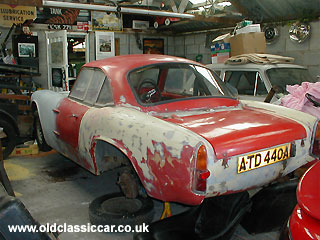
|
Nickri Champion Another one I owned for a while, discovered sat in a garage having been off the road 20 years or so. Now with a new owner who is undertaking a lengthy restoration. Read more about this car on the Nickri page, in the My Cars section. Also see: Nickri Alpine, an owner's story. |
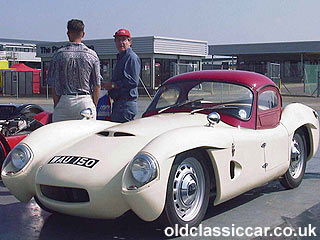
|
Tornado Typhoon "The cream and red car is a Typhoon, sidevalve based, 8hp head twin su's, 4.7 diff and it now has ballamy wheels, this is a totally original car. I also have a Talisman which still has the original Cosworth engine and I also have the original Thunderbolt, which is similar to the Tempest built with TR3 engine and stronger chassis. My brother also has three cars as well, he has a really nice 2+2 typhoon which he has just completed."(Dave Martin) Also see: Tornado Typhoon in the 1960s. Typhoon 'occasional 4' in restored condition. |
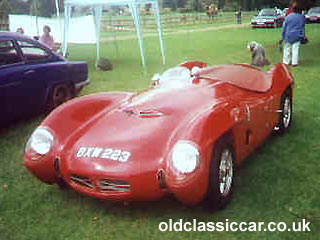
|
Tornado Tempest "The red car is the competition Tempest only one of these were made, with formula junior engine (105e) with twin 38 dcoe's, racing cam and fully tuned and balanced. Linked to a close ratio, straight cut gearbox, with aly bell housing, then at the back are inboard alfin brakes with Formula Junior uprights. I have one piece of good fortune with Tornado cars, as my father was the works foreman and driver and he built most of the cars, so the restorations do not take too long!" (Thanks to Dave Martin for info) |

|
Tornado Tempest This image of a non-original Tempest landed in my Inbox early in 2008. Tim, who lives in Holland, sent it over, it shows his brother-in-law's Tornado Tempest, with what looks like modern running gear under the bodywork. They'd both be interested in making contact with anyone else who owns a Tempest; with so few examples being built, tracking down owners of the other surviving cars must be difficult. Thanks for sending the photo in. |
|
|

Custom Search
|
 |
| Old Classic Car (C) R. Jones 2026. Content not to be reproduced elsewhere. |
| Website by ableweb. |
| Privacy Policy, Cookies & Disclaimers |